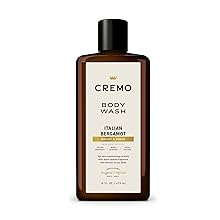
How do I get the COVID-19 medication Paxlovid?
CBC
Paxlovid, an antiviral drug for treatment of COVID-19 made by Pfizer, was approved in Canada on Jan. 17. Health Canada says as of March 31, it has shipped enough doses for 150,000 people to the provinces and territories, allocated on a per capita basis.
But most of the provinces have only given a small percentage of their Paxlovid doses to patients so far, according to emailed responses to CBC News inquiries. In both Ontario and Alberta, for example, only about three per cent of their doses have actually reached patients.
Despite provinces having so many doses on hand that haven't been used, people have told CBC News that the process of trying to get Paxlovid has been fraught with obstacles, ranging from availability of the drug to a lack of easily accessible places to get it.
That's a problem, experts say, because to be effective, Paxlovid must be taken within five days of developing symptoms.
"[There are] just so many delays along the way that patients are losing out here on a drug that really can change their prognosis if they're considered high risk," said Dr. Zain Chagla, an infectious diseases specialist at McMaster University.
Here are some basics about Paxlovid, who should take it and where to start if you're trying to get it.
Paxlovid is for adults in the early days of infection who have mild to moderate symptoms of COVID-19 and who have a high risk of deteriorating into severe illness and requiring hospitalization. The risk criteria vary by province, but can include being immunocompromised, having serious underlying conditions (such as obesity or diabetes), being older and being unvaccinated.
Eligible patients take Paxlovid at home after testing positive for COVID-19. It is not approved for patients who are already hospitalized with severe or critical COVID-19 symptoms.
Paxlovid is a combination of two antiviral medications: nirmatrelvir and ritonavir. Nirmatrelvir interferes with the proteins the coronavirus needs to multiply and stops it from infecting more cells. Ritonavir slows the breakdown of nirmatrelvir so it stays in the body long enough to do its job.
The medication is in pill form, taken twice a day for five days. The nirmatrelvir and ritonavir pills for each dose are packaged together in a blister pack, so you know how much to take.
To get a prescription, you need a positive COVID-19 test.
What you do after that depends on where you live, because the provinces and territories are in charge of distributing drugs.
In most provinces, after you get a positive COVID-19 test, you need to get the prescription from a doctor or nurse practitioner.
If you don't have a primary health-care provider or can't get in touch with them, in some provinces you can consult with a health-care provider through telehealth services (e.g., Service BC in British Columbia, Health Links in Manitoba, Health Line 811 in Saskatchewan, Health Link in Alberta, or Telehealth in Ontario.) Nova Scotia asks patients to fill in an online screening form.

Western Canada glaciers melting twice as fast as in previous decade, research says; Nigerian judge convicts man of sextorting B.C. teen who died by suicide; Overdose deaths tick up to 165 in April: B.C. Coroners Service; Her husband died after a lung transplant. Now she has to sell her home to pay the bills; Gaza health authorities say Israel kills 44 waiting for aid as war's death toll passes 56,000.





















 Run 3 Space | Play Space Running Game
Run 3 Space | Play Space Running Game Traffic Jam 3D | Online Racing Game
Traffic Jam 3D | Online Racing Game Duck Hunt | Play Old Classic Game
Duck Hunt | Play Old Classic Game






